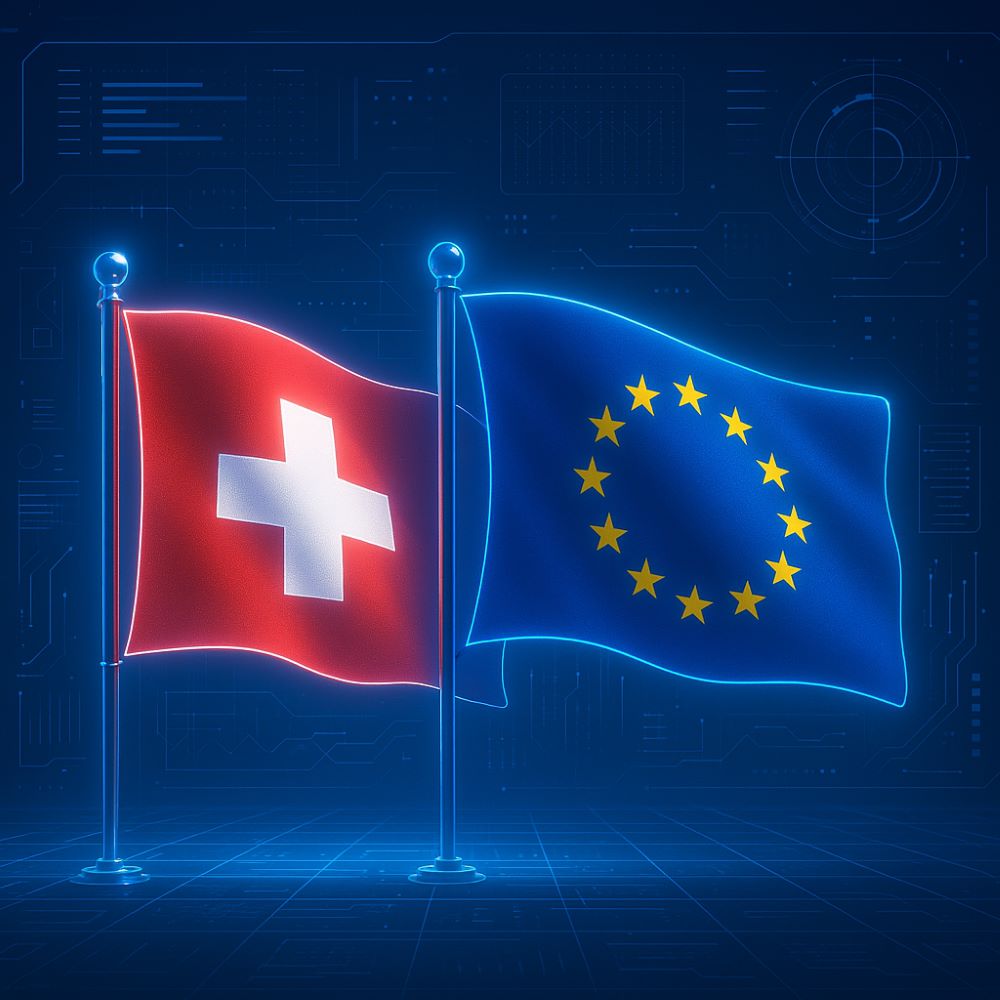
What is eIDAS 2.0 – and why should Swiss companies act now?
The EU regulation eIDAS 2.0 marks a fundamental change in the way digital identities and trust services are handled in Europe. It significantly expands the previous legal framework (eIDAS 1.0, 2014) with the aim of establishing a common digital identity infrastructure within the EU. At its heart is the EU Digital Identity Wallet (EUDI Wallet): a government-issued app that allows citizens and businesses to prove their identity digitally and use electronic services securely – across borders, interoperably, and with the highest level of trust.
Swiss companies are also directly and indirectly affected: anyone working with partners, customers, or institutions in the EU will be confronted with wallet-based identity proofs and signatures by 2026 at the latest. At the same time, Switzerland is in the process of further developing its own eID and trust infrastructure – with the clear goal of remaining compatible with the EU.
The most important changes in eIDAS 2.0 at a glance
- EU Digital Identity Wallet: Every EU citizen will, upon request, receive a digital wallet issued by their member state. This wallet contains electronic credentials – e.g., ID cards, driver's licenses, or powers of attorney – and can be used to log in to online services, sign documents digitally, or verify age.
- Qualified Electronic Attestation of Attributes (QEAA): In addition to personal data, organization-related information can also be digitally certified and verified – e.g., that someone is the managing director of a limited liability company or has a specific professional qualification.
- New trust services or trust services strengthened with eIDAS 2.0: The range of regulated services is being expanded – e.g., for electronic register entries (qualified electronic ledger, Art. 45k), electronic delivery (qualified electronic registered delivery service, QERDS), or the affixing of electronic seals on websites (qualified website authentication certificate, QWAC, Art. 45), e.g., for authentication purposes.
- Mandatory recognition: Wallets and the evidence they contain must be accepted in all EU member states – including in the private sector, provided that they are so-called “cross-sector services” (e.g., telecommunications, finance, health services, transport, or energy supply).
- High standard of trust: All processes – from issuance to use – are subject to strict technical and organizational security requirements. This creates a new level of quality for digital identities.
What does this mean in concrete terms for Swiss companies?
Even though eIDAS 2.0 is only formally applicable in the EU, it is highly relevant for Switzerland in practice:
- International business: Swiss companies that trade with EU countries or have locations in the EU must plan for wallet-based identity checks, signatures, and digital credentials – especially in contract management, customer onboarding, and powers of attorney.
- Digital interoperability: Switzerland is creating a state trust infrastructure in its new eID law that, in addition to eID, also includes other digital credentials (e.g., driver's licenses, diplomas) and is explicitly designed to be eIDAS 2.0-compatible.
- Competitive advantage through pioneering status: Those who integrate wallet-enabled processes at an early stage can both meet regulatory requirements and create new services for customers and partners – e.g., automated verification, simpler compliance processes, or digitally signed proofs of representation.
- No obligation to use a wallet: Use of the EU wallet is voluntary. Even without a wallet, individuals can continue to provide qualified electronic signatures – for example, after one-time identification (e.g., via AutoIdent), on the basis of which a digital certificate is issued that remains valid for years and enables continuous signing with QES – for example, via a signature platform service such as signeer.
How platforms for electronic signatures are prepared
signeer, mesoneer's platform for electronic signatures, is technologically and regulatorily positioned to support a seamless transition to the eIDAS 2.0 world – without disruptions, but with freedom of choice.
- Fully compatible with Switzerland and the EU: The platform processes signature requests in accordance with eIDAS and ZertES in parallel. This allows companies to work with both EU partners and purely Swiss processes – without media discontinuity.
- Future-proof identity connection: signeer will be able to technically integrate wallet-based identities and qualified attributes – for example, by integrating PID (Person Identification Data) from the EU wallet or future Swiss e-ID.
- Flexible signature triggering: Whether via classic authentication methods (e.g., SMS-OTP) or directly via wallet in the future, signeer will support both options.
- Attribute-based control: Wallets not only provide identity, but also structured information (e.g., function within the company). signeer will be able to integrate such attributes into signature processes – e.g., to automatically check whether a person is authorized to represent another.
- Technological openness: Thanks to open interfaces and modular architecture, signeer can be easily integrated into existing processes and combined with wallet gateways or trust frameworks in the future.
- Trust infrastructure from Switzerland: signeer processes and stores all data in Swiss data centers and meets high data protection and security standards. This remains a decisive factor even in an increasingly EU-centric identity world.
{{cta-component}}
Digression: Qualified attributes in practice – how the interaction could work
With eIDAS 2.0, qualified trust service providers (QTSPs) can issue so-called “Qualified Electronic Attestations of Attributes” (QEAA) – for example, regarding roles, functions, or professional affiliations. These attestations can be stored in the wallet and shared with a signature platform as needed.
A practical example with signeer: 1. A person is invited to sign a document that may only be signed by members of the executive board. 2. They authenticate themselves with their EU wallet and release a qualified attribute (e.g., “Managing Director of Muster GmbH”). 3. This attribute is transmitted to signeer together with the signature and documented in an audit-proof manner in the audit trail. 4. If necessary, the organization can use automated verification mechanisms* or verify the attribute manually, depending on the governance model. 5. The qualified electronic signature is then applied.
The result: fewer media breaks, greater efficiency, and audit-proof documentation of the role of the signatory.
Conclusion: Act strategically instead of reactively
Digital identity and signatures are no longer a niche topic—they are becoming the foundation of digital processes throughout Europe. The time until the mandatory introduction of the EU wallet is short. Companies in Switzerland should not view eIDAS 2.0 as merely an EU regulation, but as an opportunity to review their own digital infrastructure and make it future-proof. Platforms such as signeer can help turn regulatory change into a strategic advantage – interoperable, legally compliant, and geared toward the future.
*The eIDAS 2.0 Regulation does not prescribe a fixed list of attributes, but a Europe-wide standardization is emerging. In the future, frequently used attribute types such as role (e.g., “managing director”), organization (legal entity), representationRight (signatory authority), or profession (e.g., “lawyer”) are to be expected. These should be transferable in a structured, machine-readable format (e.g., JSON-LD) and validatable in an interoperable manner – a prerequisite for automated checks in platforms such as signeer.
Frequently asked questions
The eIDAS 2.0 Regulation expands the existing legal framework for digital identities and trust services in Europe. It introduces the EU Digital Identity Wallet (EUDI Wallet), an app that allows citizens and businesses to prove their identity digitally and use electronic services securely. The Regulation also covers new trust services such as electronic register entries and electronic delivery.
The eIDAS 2.0 Regulation will enter into force on May 20, 2024. This marks the start of a gradual implementation phase, during which Member States will have different deadlines for fully adopting the updated digital identity standards.
Ready for eIDAS 2.0? We'll make you future-proof.
With the Digital Trust Platform, we help companies not only meet these requirements but to build Digital Trust along the complete customer lifecycle. Contact us now!
Related Blog Posts





